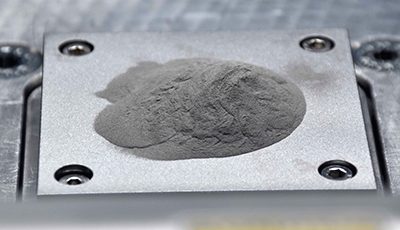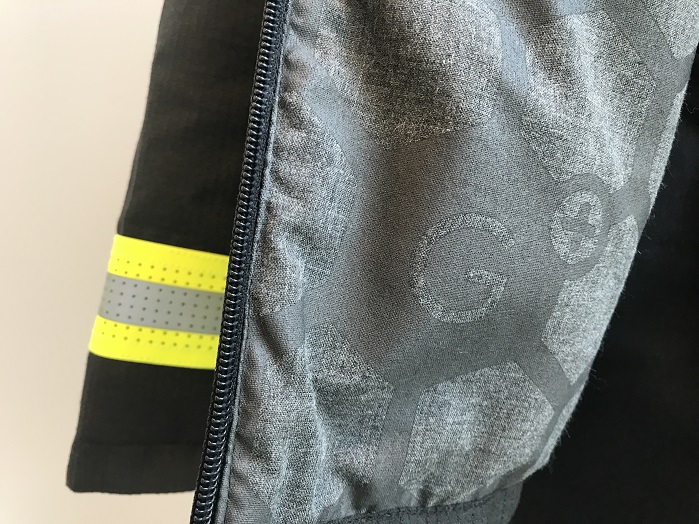QUANTUM DOTS NEWS
Nanosys has recently raised $7.5M in venture funding. Nanosys develops QDs for application in displays and batteries.
Dotz Nano has announced the successful development of a process to tag fuel derivatives with graphene quantum dots (GQDs). The technology allows GQDs to be optimally added to fuel derivatives via a patent pending method so that the GQDs cannot be easily “laundered” or “washed out” from the fuel.
NANOCOATINGS NEWS
HRL Laboratories, LLC, has made a breakthrough in metallurgy with the announcement that researchers have developed a technique for successfully 3D printing high-strength aluminum alloys—including types Al7075 and Al6061—that opens the door to additive manufacturing of engineering-relevant alloys. These alloys are very desirable for aircraft and automobile parts and have been among thousands that were not amenable to additive manufacturing—3D printing—a difficulty that has been solved by the HRL researchers. An added benefit is that their method can be applied to additional alloy families such as high-strength steels and nickel-based superalloys difficult to process currently in additive manufacturing.
“We’re using a 70-year-old nucleation theory to solve a 100-year-old problem with a 21st century machine,” said Hunter Martin, who co-led the team with Brennan Yahata. Both are engineers in the HRL’s Sensors and Materials Laboratory and PhD students at University of California, Santa Barbara studying with Professor Tresa Pollock, a co-author on the study. Their paper 3D printing of high-strength aluminum alloys was published in the September 21, 2017 issue of Nature.

HRL’s nanoparticle functionalization technique solves this problem by decorating high-strength unweldable alloy powders with specially selected nanoparticles. The nanoparticle-functionalized powder is fed into a 3D printer, which layers the powder and laser-fuses each layer to construct a three-dimensional object. During melting and solidification, the nanoparticles act as nucleation sites for the desired alloy microstructure, preventing hot cracking and allowing for retention of full alloy strength in the manufactured part.
GRAPHENE NEWS
Moving, vibrating and leaping molecules make up our world. However, capturing their movement is not an easy task. IBS scientists at the Center for Soft and Living Matter, within the Institute for Basic Science (IBS), were able to see the movement of molecules stored inside a graphene pocket without the need to stain them. This study paves the way for observing the dynamics of life building blocks, like proteins and DNA, as well as the self-assembly of other materials. http://dx.doi.org/10.1002/adma.201703555
Researchers from the University of Jyväskylä (Finland) and the National Central University and National Synchrotron Radiation Research Center in Taiwan have discovered how graphene can be forged into three-dimensional objects by using laser light. A striking illustration was provided when the researchers fabricated a pyramid with a height of 60 nm, which is about 200 times larger than the thickness of a graphene sheet. The pyramid was so small that it would easily fit on a single strand of hair. The research was supported by the Academy of Finland and the Ministry of Science and Technology of the Republic of China. http://pubs.acs.org/doi/10.1021/acs.nanolett.7b03530
G2O Water Technologies has signed an agreement with an unnamed consumer products company to test and evaluate its graphene-based water treatment filtration technology. The company creates low-cost printed graphene filters or applies a graphene coating to existing membranes used in water filtration processes.
Directa Plus has signed its first contract to supply high performance technical textiles with Graphene Plus (G+) to Alfredo Grassi, a leading manufacturer of customised protective clothing, workwear and uniforms.
Flat panel display glass substrate maker Tunghsu Optoelectronic Technology Co., based in China’s northern Hebei province, has introduced a new series of graphene LED ‘super lights’ at the 2017 International Graphene Innovation Conference. The new product uses graphene for heat dissipation and conduction. Their volume is 75 percent lower than traditional LED lights and they are 30 percent lighter. Power-saving capacity is 20 to 30 percent better and they provide high-performance luminescence and light distribution.
Haydale has announced the first commercial sales of its products to Everpower Sheng Tie (Xiamen) Graphene Technology Co., Ltd. (“Everpower”). The sales are for a range of Haydale’s Silicon Carbide Fibres (“SiC”) and 3D PLA masterbatch mixed with Haydale’s functionalised Graphene Nano Platelets (“Additive Manufacturing PLA” or “AM PLA”) for immediate delivery. Haydale believes that these sales to Everpower are strategically important as they mark Haydale’s first commercial sales into China and launches the Group and its products into what is expected to be a significant marketplace for Haydale. This SiC sale to Everpower is at commercial rates and is worth US$150,000 to the Group. This sale follows extensive customer testing of sample quantities of SiC supplied to Everpower in May 2017. Haydale’s SiC products are primarily focused on industries that require improvement in product toughness, wear, scratch resistance, and overall strength. Haydale understands that Everpower is initially targeting repair and corrosion protection for pipes in the oil and gas industry.
The University of Illinois at Chicago has received a $1.44 million National Science Foundation grant to discover new 2D materials that can be used to manufacture better and cheaper batteries. The researchers will incorporate 2D materials with an ionic liquid to elicit an electrochemical reaction that can be used to generate sustainable energy, manufacture chemicals, store energy and remove pollution or contaminants from soil, groundwater, sediment or surface water.
NANOMEDICINE NEWS
Ceres Nanosciences, Tasso, George Mason University, and the United States Army Medical Research Institute of Infectious Diseases, have received $4.25 million from the US Department of Defense’s Defense Threat Reduction Agency (DTRA) to develop a platform for surveillance of infectious disease outbreaks.
The award is part of a larger, multi-year $11.7 million program funded by the DTRA through which Ceres will work to integrate its Nanotrap enrichment technology with Tasso’s HemoLink blood sampling device.
Ceres’ Nanotrap technology uses hydrogel nanoparticles functionalized with internal affinity baits to enrich target analytes for downstream analysis. The system uses chemical dyes to bind analytes of interest, concentrating them inside the nanoparticles and protecting them from enzymatic degradation, thereby improving the sensitivity of the ultimate clinical detection method.


